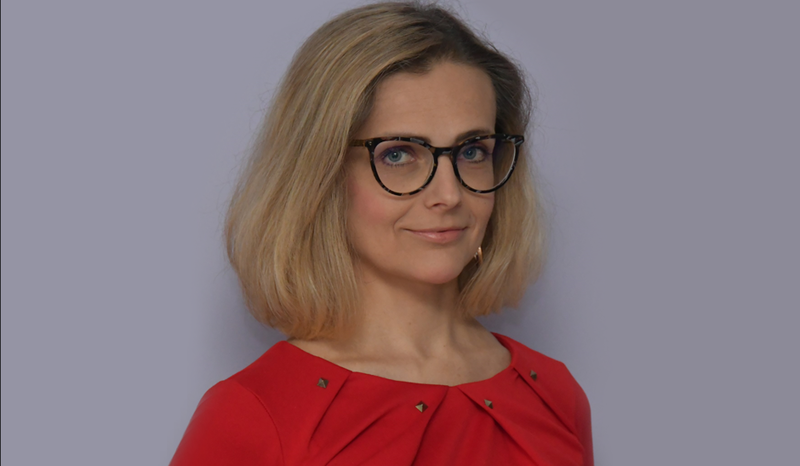Creative Industries
Faculty of Creative Industries
Latest news
Learning from and about COVID-19 mask memes

2023-01-27
Learning from and about COVID-19 mask memes
The COVID-19 pandemic lockdowns worldwide made people rely on social media communication much more than they would have done in ordinary circumstances. This shows, among other things, in the intensive production of memes, that is verbal-visual items, typically humorous, created and shared by users on various social media platforms and circulated on popular news websites. Engaging in memetic activity – as both posters and receivers – amid the COVID-19 pandemic in 2020 allowed people not only to kill time and entertain themselves despite the grave circumstances but also to exchange their (serious) thoughts on the current socio-political situation. This further testifies to what we know about humour: its relief-giving and solidarity-building functions, as well as its potential to act as an interest-generating vessel that carries meanings to multiple receivers in the case of memes.
One of the hotly debated topics in 2022 was that of protective masks, with the central problems ranging from their dearth in the early months of the pandemic to contradictory (mis)information messages about the effects of mask-wearing shared across traditional and new media. Naturally, all of this was manifest in users’ memetic production. In my two papers about COVID-19 mask memes, based on automatically collected datasets, I report the prevalent types/trends on the pandemic memescape and address prominent issues about the nature and workings of memes in general.
In the light of my diachronic study of mask memes posted online in the span of the first year of the COVID-19 pandemic, I distil 10 memetic trends, adducing evidence that they linger on the memescape in the selected timespan. Additionally, the same memes re-appear over the months, sometimes despite the dwindling significance of the socio-political topics they address or have been inspired by (consider the early 2020 photographs of Chinese travellers with large water bottles over their heads consistently reposted even towards the end of 2020). Thus, many memes must have gone viral as a result of reposting with no transformations, presumably due to their perceived funniness. The long lifespan of individual memes and generic memetic constructs seems to reflect users’ primary goal, which is to circulate interesting and amusing items (albeit not always newly minted) for others to appreciate. This basic objective is not affected by specific memes’ nature, that is whether they essentially represent humour for its own sake or whether they serve as users’ commentaries on the surrounding reality (or appear to have lost this function at the time of reposting).
A substantial number of COVID-19 mask memes involve subjects, that is people (and sometimes also animals) featured in memetic images. These subjects include unwitting passers-by in uncanny masks spotted in public places and duly laughed at by social media users, as well as individuals in selfies or pictures taken by their accomplices wearing (or pretending to wear) fancy masks and costumes just for fun or in order to poke fun at the creative or plain stupid safety measures people did resort to at the time of crisis and uncertainty. Consequently, this means that such subject-based memetic items involve multiple perspectives (formally conceptualised as Bakhtinian voices rendered multimodally), namely those of the subject, author, poster and re-poster, which are brought together with various sentiments, whether mutually supportive or dissociative. Moreover, the previous voices can be modified, intentionally re-purposed or unwittingly distorted, potentially leading to confusion or deception. Finally, not infrequently, the origins of memes (that undergo replication and modification) cannot be traced, and it is sometimes impossible to tell what the previous voices (people’s goals, intentions and rationale) actually were. These are the general observations that are offered for consideration to other meme researchers, to whom memes are more than a standard source of everyday entertainment.
Written by Prof. Dr. habil. Marta Dynel
Sources:
Dynel, M. 2021. COVID-19 memes going viral: On the multiple multimodal voices behind face masks. Discourse & Society 32(2): 175-195. Available here
Dynel, M. 2022. The life of COVID-19 mask memes: A diachronic study of the pandemic memescape. Comunicar 72: 73-84. Available on the journal’s website or here
About the author:
Marta Dynel (Full Professor) is Research Professor in the Department of Pragmatics at the University of Łódź and part-time Chief Research Fellow in the Department of Creative Communication at Vilnius Gediminas Technical University (VILNIUS TECH). Her current research interests are primarily in social media discourse with a focus on humour, impoliteness, irony and deception. She is the author of 2 monographs, over 125 journal papers and book chapters, as well as 15 (co)edited volumes and special issues. She is the Editor-in-Chief of Lingua.
https://martadynel.com/
One of the hotly debated topics in 2022 was that of protective masks, with the central problems ranging from their dearth in the early months of the pandemic to contradictory (mis)information messages about the effects of mask-wearing shared across traditional and new media. Naturally, all of this was manifest in users’ memetic production. In my two papers about COVID-19 mask memes, based on automatically collected datasets, I report the prevalent types/trends on the pandemic memescape and address prominent issues about the nature and workings of memes in general.
In the light of my diachronic study of mask memes posted online in the span of the first year of the COVID-19 pandemic, I distil 10 memetic trends, adducing evidence that they linger on the memescape in the selected timespan. Additionally, the same memes re-appear over the months, sometimes despite the dwindling significance of the socio-political topics they address or have been inspired by (consider the early 2020 photographs of Chinese travellers with large water bottles over their heads consistently reposted even towards the end of 2020). Thus, many memes must have gone viral as a result of reposting with no transformations, presumably due to their perceived funniness. The long lifespan of individual memes and generic memetic constructs seems to reflect users’ primary goal, which is to circulate interesting and amusing items (albeit not always newly minted) for others to appreciate. This basic objective is not affected by specific memes’ nature, that is whether they essentially represent humour for its own sake or whether they serve as users’ commentaries on the surrounding reality (or appear to have lost this function at the time of reposting).
A substantial number of COVID-19 mask memes involve subjects, that is people (and sometimes also animals) featured in memetic images. These subjects include unwitting passers-by in uncanny masks spotted in public places and duly laughed at by social media users, as well as individuals in selfies or pictures taken by their accomplices wearing (or pretending to wear) fancy masks and costumes just for fun or in order to poke fun at the creative or plain stupid safety measures people did resort to at the time of crisis and uncertainty. Consequently, this means that such subject-based memetic items involve multiple perspectives (formally conceptualised as Bakhtinian voices rendered multimodally), namely those of the subject, author, poster and re-poster, which are brought together with various sentiments, whether mutually supportive or dissociative. Moreover, the previous voices can be modified, intentionally re-purposed or unwittingly distorted, potentially leading to confusion or deception. Finally, not infrequently, the origins of memes (that undergo replication and modification) cannot be traced, and it is sometimes impossible to tell what the previous voices (people’s goals, intentions and rationale) actually were. These are the general observations that are offered for consideration to other meme researchers, to whom memes are more than a standard source of everyday entertainment.
Written by Prof. Dr. habil. Marta Dynel
Sources:
Dynel, M. 2021. COVID-19 memes going viral: On the multiple multimodal voices behind face masks. Discourse & Society 32(2): 175-195. Available here
Dynel, M. 2022. The life of COVID-19 mask memes: A diachronic study of the pandemic memescape. Comunicar 72: 73-84. Available on the journal’s website or here
About the author:
Marta Dynel (Full Professor) is Research Professor in the Department of Pragmatics at the University of Łódź and part-time Chief Research Fellow in the Department of Creative Communication at Vilnius Gediminas Technical University (VILNIUS TECH). Her current research interests are primarily in social media discourse with a focus on humour, impoliteness, irony and deception. She is the author of 2 monographs, over 125 journal papers and book chapters, as well as 15 (co)edited volumes and special issues. She is the Editor-in-Chief of Lingua.
https://martadynel.com/
-
- Page administrators:
- Gabija Velykytė
- Milda Gumbytė
- Dovilė Lisauskienė
- Karolina Kardokaitė
- Ugnė Daraškevičiūtė


